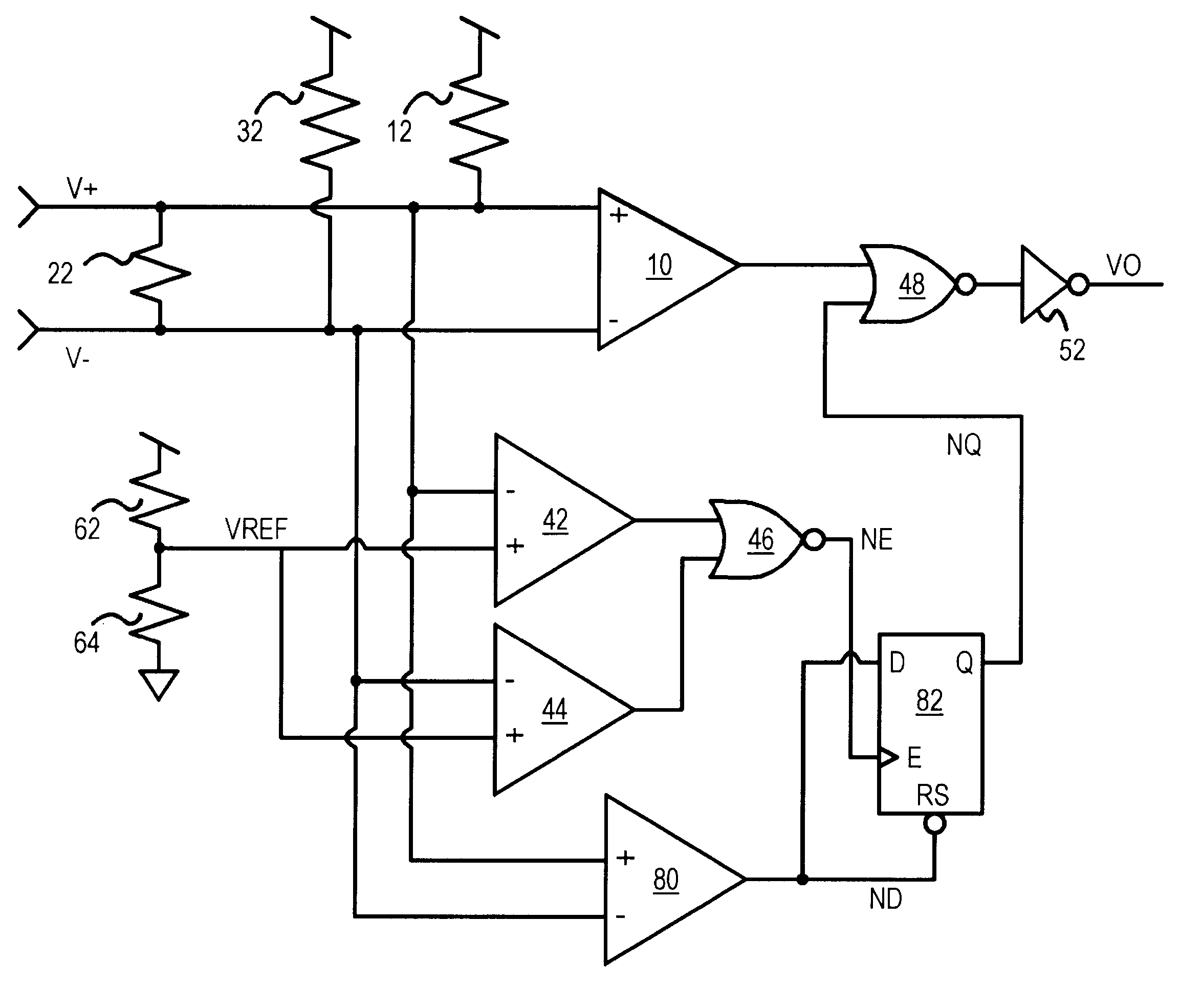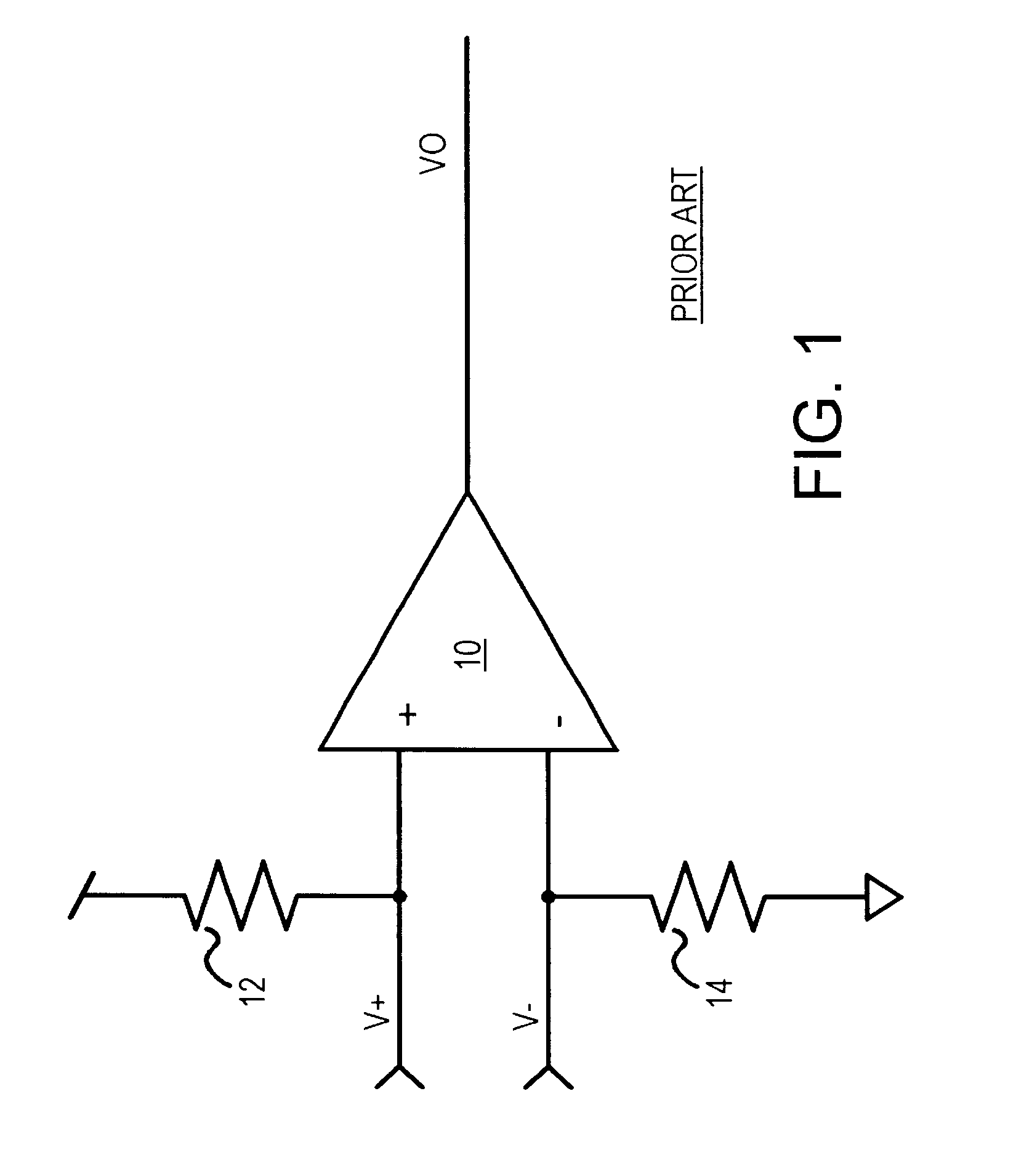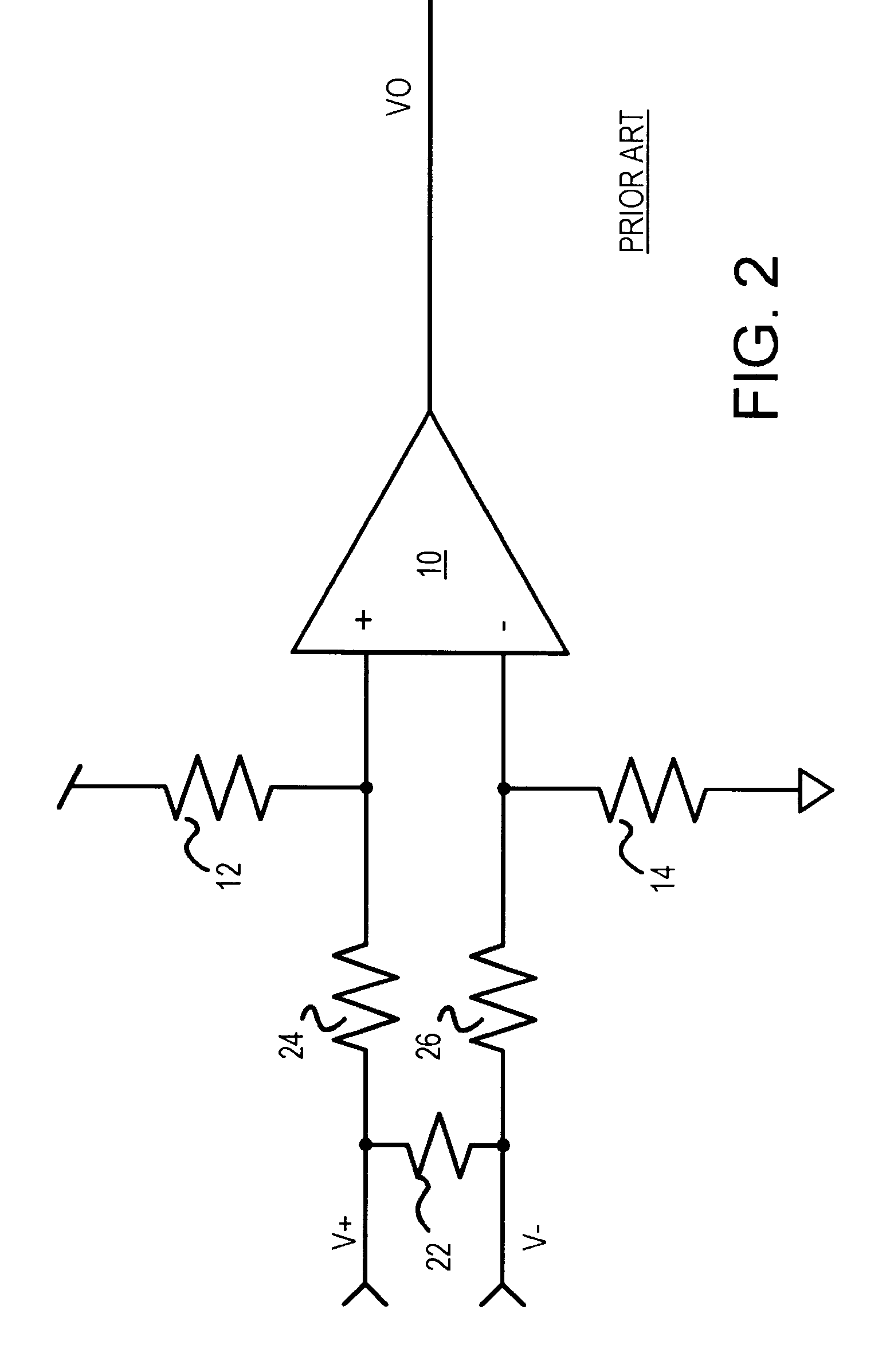Latched active fail-safe circuit for protecting a differential receiver
a failsafe circuit and differential receiver technology, applied in the field of differential receivers, can solve the problems of large signal swing, increased system noise, and reduced data quality and transmission rate, and achieve the effects of increasing electro-magnetic interference (emi) and system nois
- Summary
- Abstract
- Description
- Claims
- Application Information
AI Technical Summary
Problems solved by technology
Method used
Image
Examples
Embodiment Construction
Several other embodiments are contemplated by the inventor. For example reference voltage VREF can be lowered somewhat, such as to 95% or less of the Vcc, when a narrower common-mode range is expected. Many different resistance values can be used, and the load or terminating resistor is normally selected to match the impedance of the V+, V- transmission lines, usually in the range of 50 to 120 Ohms. The offset can be less than or more than 50 mV, such as 20 mV.
Various inversions in the logic can be introduced, and NAND gates rather than NOR gates can be substituted using DeMorgan's theorem. The inverting and non-inverting inputs to the comparators and the differential amplifier can be swapped to invert their outputs. Active-low signals rather than active-high signals can be substituted. Several gates can be combined into a larger gate, such as a 3-input AND or NAND gate. The overall output can sometimes be disabled by turning off the differential amplifier with the fail-safe signal ...
PUM
 Login to View More
Login to View More Abstract
Description
Claims
Application Information
 Login to View More
Login to View More - R&D
- Intellectual Property
- Life Sciences
- Materials
- Tech Scout
- Unparalleled Data Quality
- Higher Quality Content
- 60% Fewer Hallucinations
Browse by: Latest US Patents, China's latest patents, Technical Efficacy Thesaurus, Application Domain, Technology Topic, Popular Technical Reports.
© 2025 PatSnap. All rights reserved.Legal|Privacy policy|Modern Slavery Act Transparency Statement|Sitemap|About US| Contact US: help@patsnap.com



